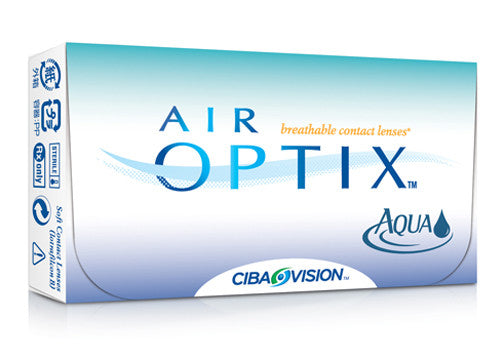
So you found out you have astigmatism and now you’re wondering if you’ll have to wear glasses for the rest of your life, which we know can be an issue if you don’t like how they look, play sports or do other active things, are fond of your peripheral vision, enjoy going glasses-free for certain occasions or live in an area where rain and fog are frequent occurrences. Thankfully, contact lenses have really evolved and even people with a high degree of astigmatism can usually rock them without a problem. However, your first step should be visiting an eye doctor for an exam. It’s important for your health as well as ensuring you’re getting the right lenses, they fit comfortably and your vision is on point. Here are some questions to ask the doc at your next appointment so you feel confident about your choices when it comes to astigmatism and contact lenses.
1. How is My Vision?
Your top priority is finding out at your eye exam how your vision is doing. Ask if there have been any changes and what your prescription is. Obviously, wearing contacts with the correct prescription and updating that prescription as needed will enable you to see properly and will bring the world into focus.
Astigmatism is an irregularity with the curvature of the cornea (corneal astigmatism) or the shape of your eye’s lens (lenticular astigmatism). It makes objects both near and far appear blurry and those in a distance might even look wavy. Your eye could be in the shape of the back of a spoon or a football as opposed to a perfectly round ball. Even with astigmatism, you can also have nearsightedness or farsightedness too, which is why eye exams are super important.
At your appointment, you’ll also want to ask, “How much astigmatism do I have?” Believe it or not, most people have some degree of astigmatism – many are even born with it –but it’s not severe enough to have a real impact on their vision. Usually, the eye doctor won’t diagnose you with the condition or bring it up if it’s less than one diopeter of astigmatism, though some people will notice their vision isn’t great at lower levels than that. If you’re not seeing as clearly as you want, make sure to tell your doctor because everyone has a different threshold of tolerance for it. The amount of astigmatism you have can also play a role in the types of vision correction that will work best. Keep in mind that if you have a high level of astigmatism, you could still be a candidate for soft contact lenses. There are brands, such as Frequency 55 Toric XR, that have an extended range of powers.
2. Can I Wear Contact Lenses With Astigmatism?
While your eye doctor will probably go into further detail, the answer is, yup, in the vast majority of cases you can. As you’ll see in our response to the next question, there are different types of contacts for astigmatism. Even people that also suffer from nearsightedness or farsightedness in conjunction with their astigmatism, can rely on bifocal or multifocal rigid gas permeable (GP) or soft toric lenses so they can see up close, at an intermediate distance and far away. Fitting patients with astigmatism for contact lenses is a little more difficult, so finding a doctor with experience in astigmatic eyeballs is a key way to discover lenses that feel awesome and give you excellent vision.
3. Which Contacts are Best for Astigmatism?
Contact lenses for astigmatism come in a few different varieties. Depending on your situation, your eye doctor may recommend one kind over another. New materials and technology mean soft contact lenses can be a possibility in most cases but let’s take a closer look:
Soft Contact Lenses for Astigmatism
Soft contact lenses for astigmatism are toric lenses. A toric lens is shaped differently than your regular spherical lens and has varying refractive (focusing) powers on both the vertical and horizontal orientations, which is necessary for astigmatic eyes since they require multiple powers. The lenses have to sit in a certain way so that the middle axis stays put, your line of vision is clear and the different refractive powers are in the right positions. This is why most toric lenses have design features to keep the contacts in place and prevent them from rotating like being thicker on the bottom, having ballasting (thicker and heavier), thin zones or thin-thick zones, lens truncation (bottom of lens is cut off slightly), etc.
Soft toric contacts are a lot more comfortable than hard lenses, easier to use and wear and they don’t usually fall out. Yet, sometimes you may be sacrificing comfort for visual acuity since if they rotate it will cause blurriness. Still, soft toric contact lenses have come a long way. For example, Basuch & Lomb SofLens Toric contacts have a patented design so that they’re more stable during wear and they refocus light to a single point for sharp, clear vision. 1-Day Acuvue Moist for Astigmatism are dailies that employ a Blink Stabilized™ lens design so they realign every time you blink. Features like these can go a long way in keeping contacts from rotating or shifting, which was the major problem in the past with soft lenses for astigmatism. Your eye doctor can help you find the brand and style most suited to your eye for comfort and stability.
Rigid Gas Permeable Contacts (GP) for Astigmatism
Back in the day, people with significant astigmatism had to wear GP lenses, also known as “hard” contacts. These solid lenses don’t need a toric design, though there are toric GP lenses available. Instead, the rigid contacts retain their spherical shape and your tears settle in the area between your cornea and the back of the lens, which corrects astigmatism. Since they’re rigid, thicker and heavier, they don’t rotate and can offer sharper vision. Sometimes, they’re still the only option for individuals with unusual types of or very high levels of astigmatism. In other instances, people who need contacts for hard-to-fit eyes, can turn to scleral contacts or custom lenses.
While GP lenses can give you amazing eyesight, they take a long time to adapt to. Most people find them very uncomfortable, especially at first, and some people just aren’t able to wear them at all. They’re less user-friendly, more expensive, have to be worn every day for maximum tolerance, can fall out due to their rigidity and since debris can accumulate under them, eye irritation is common.
4. Should I Wear Hybrid Contact Lenses for Astigmatism?
Hybrid contact lenses are the newest kids on the astigmatism block. They feature a GP center surrounded by a soft lens skirt. The combination of the two types of contacts allows for crisp vision and comfort. Yet, hybrid contacts have their drawbacks. They can be pricier than soft contacts, can’t typically be purchased online, don’t correct lenticular astigmatism and require learning a whole new way to insert, remove and care for your contacts.
5. How Can I Ensure I'm Wearing Contact Lenses Safely?
Your eye doctor should give you a rundown of contact lens basics, whether you have astigmatism or not, including how to safely put them in and take them out, particularly if you’ll be switching to a new kind of lens, and how to disinfect, store and care for them. If they don’t cover safety topics, ask! Wearing and cleaning your contacts as directed helps maintain the health of your eyes.
6. What Replacement Schedule is Right for Me?
Based on your lifestyle, whether or not you suffer from certain eye conditions, like dry eye, and your budget, one replacement schedule may be more advantageous than the others. For example, if you don’t mind spending a little extra for convenience, you work in front of a computer and your eyes get easily fatigued and dry and you’re always on the go, swapping out your contact lenses frequently will be beneficial for you. Yet, your eye doctor has the expertise and knowledge of your eyeballs to help steer you in the right direction. If you’ll be opting for soft lenses, there are extended wear, monthly, weekly and even daily contacts for astigmatism.
Now that you’re armed with a list of questions for your eye doctor, go forth and have those eyes checked. When you’re ready to pop in some lenses, Fresh Lens has you covered. We have a selection of the best astigmatism contacts around. Plus, you can save money and time by ordering contacts online and taking advantage of our free shipping. Even with astigmatism, we’ll help you get superhero vision (or at least 20/20) without sacrificing comfort.
Related Articles:
- Are Halloween Eye Contacts Safe?
- 5 Ways to Protect Your Eyes from Eye Strain
- 7 Things College Kids Shouldn't Do With Contact Lenses
 1-DAY ACUVUE MOIST FOR ASTIGMATISM - 30 PACK |
 SOFLENS DAILY DISPOSABLE FOR ASTIGMATISM - 90 PACK |

































